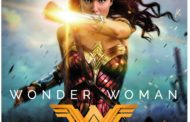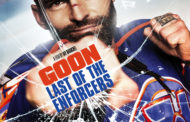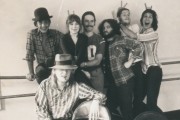 When I saw Finding Dory last week, I was dismayed by the dull-looking trailers for all of the upcoming family films. So many of them had the same sort of gag-a-minute humor, the same CG animation, and the same talking animals as the stars (seriously, how many CG animated talking animal movies come out per year?) The main things that seemed to me missing from them all were imagination and heart. That’s why something like The BFG is so welcome. This adaptation of the beloved 1982 children’s book by Roald Dahl is directed by Steven Spielberg and is his first children’s movie in some time (besides The Adventures of Tintin, Spielberg’s last PG film was 1991’s Hook). After all, if there are two things Spielberg knows how to inject into his film it’s imagination and heart.
When I saw Finding Dory last week, I was dismayed by the dull-looking trailers for all of the upcoming family films. So many of them had the same sort of gag-a-minute humor, the same CG animation, and the same talking animals as the stars (seriously, how many CG animated talking animal movies come out per year?) The main things that seemed to me missing from them all were imagination and heart. That’s why something like The BFG is so welcome. This adaptation of the beloved 1982 children’s book by Roald Dahl is directed by Steven Spielberg and is his first children’s movie in some time (besides The Adventures of Tintin, Spielberg’s last PG film was 1991’s Hook). After all, if there are two things Spielberg knows how to inject into his film it’s imagination and heart.
Sophie (Ruby Barnhill) is an inquisitive young girl who lives in an orphanage. One night she sees a giant (a brilliant Mark Rylance) outside her window, who promptly scoops her up and takes her to giant country. Because she’s seen him, and children are known to tattle, he can’t let her tell the human world about the existence of giants. But the giant – who later reveals that he’s called the BFG, for “Big Friendly Giant” – is the runt of giant country, and the nine other giants are gross, children-eating behemoths who bully him to no end. Sophie is won over by the BFGs’ docile nature – particularly when she discovers that he is responsible for giving people dreams – and she comes up with a plan to rid the BFG of the terrible giants who torment me. This takes the story into a wildly funny and totally unexpected direction.
Much of the marketing of The BFG connects the film to E.T., and it’s not a surprise why – not only is E.T. one of Spielberg’s most beloved and commercially successful films, but both films were written by the late Melissa Mathison. The story of a child befriending an otherworldly being who is need also reflects the themes of E.T. Of course, while The BFG is heartwarming and entertaining, it’s not on the level of genius as E.T. – but what films are? Occasionally, The BFG does have flashes of brilliance – such as the hilarious scene in which the BFG eats people-sized food with makeshift “giant” utensils – that are just as wonderful as E.T., which is a huge accomplishment in itself.
One aspect that sets The BFG apart from E.T. is the modern technology that brings the giant characters to life. Had Spielberg made a live-action version of The BFG years earlier, it might have been done with stop motion figures (much like Wes Anderson’s Roald Dahl adaptation The Fantastic Mr. Fox). However, the special effects in The BFG are flawless and create such a believable world that it’s easier to get immersed in it.
The only major issue with The BFG is the pacing. The set-up and conclusion of the movie are very entertaining – the first third is enchanting, while the last third is humorous – but it drags somewhat in the middle, which is filled with exposition as opposed to action. As a result, though The BFG is a few minutes shorter than E.T., it doesn’t breeze by as quickly. John Williams, who returns to Spielberg’s side after a one-film break, also contributes what is one of his least memorable scores in some time. Nonetheless, The BFG is one of the best family films of the last decade and it’s a very welcome return to the genre for Spielberg.

















Recent Comments